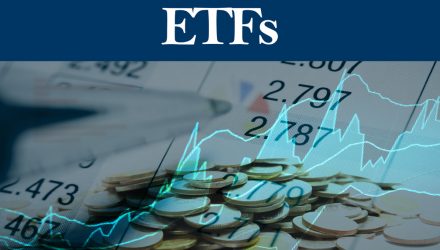Investors can incorporate a buffered outcome exchange traded fund strategy in a diversified portfolio to keep invested in the markets and hedge against further bumps down the road.
In the recent webcast, Why Buffered ETFs Now: Financial Professionals Share Tips & Best Practices, Brendan Cavanaugh, ETF product specialist at Allianz Investment Management LLC; Todd Harris, registered principal at Angelo Planning Group, LLC; Virgil Kahl, president and owner of Spring Ridge Financial Group; and Gregory Frank, director of financial analytics at Spring Ridge Financial Group, highlighted an alternative strategy to help investors maintain their market exposure while buffering against the worst of any potential downside risks.
The strategists highlighted ongoing risks that many market participants are facing today, such as rising energy costs, elevated inflationary pressures, geopolitical risks, and rising interest rate risks. These persistent risks aren’t going away anytime soon either, especially with elevated inflationary pressures and troubles the Federal Reserve faces when tackling runaway inflation that threatens the economic outlook ahead. Consequently, companies now face questions over their growth outlook, with some still highlighting the likelihood of an economic recession, especially if the Fed maintains its aggressive monetary policy stance. The combination of shifting policy, elevated inflation, and slowing growth will keep modest upward pressure on rates. Valuations are challenged with higher rate regimes and continued uncertainty.
A traditional investment portfolio will likely experience heightened sensitivity to loss in the current market environment. As a result, many investors may be underinvested in the market, or over-allocated to cash with little to no growth opportunity. Amid these volatile market conditions and heightened risk events that threaten the market stability, investors could consider alternative options to mitigate risks in their investment portfolios while keeping their toes in the markets.
Cavanaugh argued that as an alternative way to maintain market exposure and better manage downside risks, investors could turn to Allianz’s suite of buffered outcome ETF strategies, including:
- AllianzIM U.S. Large Cap Buffer10 Jan ETF (AZAJ)
- AllianzIM U.S. Large Cap Buffer20 Jan ETF (AZBJ)
- AllianzIM U.S. Large Cap Buffer10 Apr ETF (AZAA)
- AllianzIM U.S. Large Cap Buffer20 Apr ETF (AZBA)
- AllianzIM U.S. Large Cap Buffer10 Jul ETF (AZAL)
- AllianzIM U.S. Large Cap Buffer20 Jul ETF (AZBL)
- AllianzIM U.S. Large Cap Buffer10 Oct ETF (AZAO)
- AllianzIM U.S. Large Cap Buffer20 Oct ETF (AZBO)
- AllianzIM U.S. Large Cap 6 Month Buffer10 Apr/Oct ETF (SIXO)
- AllianzIM U.S. Large Cap 6 Month Buffer10 Jan/Jul ETF (SIXJ)
AllianzIM’s buffered outcome ETFs are a series of active ETFs that participate in the growth potential of an equity index to a cap and provide a level of risk mitigation with a downside buffer. They are designed to bring the in-house hedging capabilities and track record of Allianz Investment Management LLC to the retail investor.
Cavanaugh explained that the new strategy helps clients mitigate risk and lower volatility, participate in the growth potential of an equity index up to a cap, provide a level of risk mitigation with a downside buffer, and automatically resets at the end of the outcome period.
The buffered outcome ETFs provide index exposure to match the S&P 500 Index returns for a certain range of returns through a synthetic 1:1 exposure to the S&P 500 Index. The ETFs also create a buffer by buying options through a put spread that provides buffers of 10% or 20%. Lastly, the strategies establish or create a cap by selling options or an in-the-money call option to finance the downside buffer.
Additionally, SIXO and SIXJ follow a six-month outcome period. The ETFs seek to match the returns of the S&P 500 Price Return Index up to a stated cap while providing downside risk mitigation through a buffer against the first 10% of the S&P 500 Price Return Index’s losses over a six-month outcome period for new adopters or short-term money, tactical advisors.
Financial advisors who are interested in learning more about the buffered outcome ETF strategy can watch the webcast here on demand
